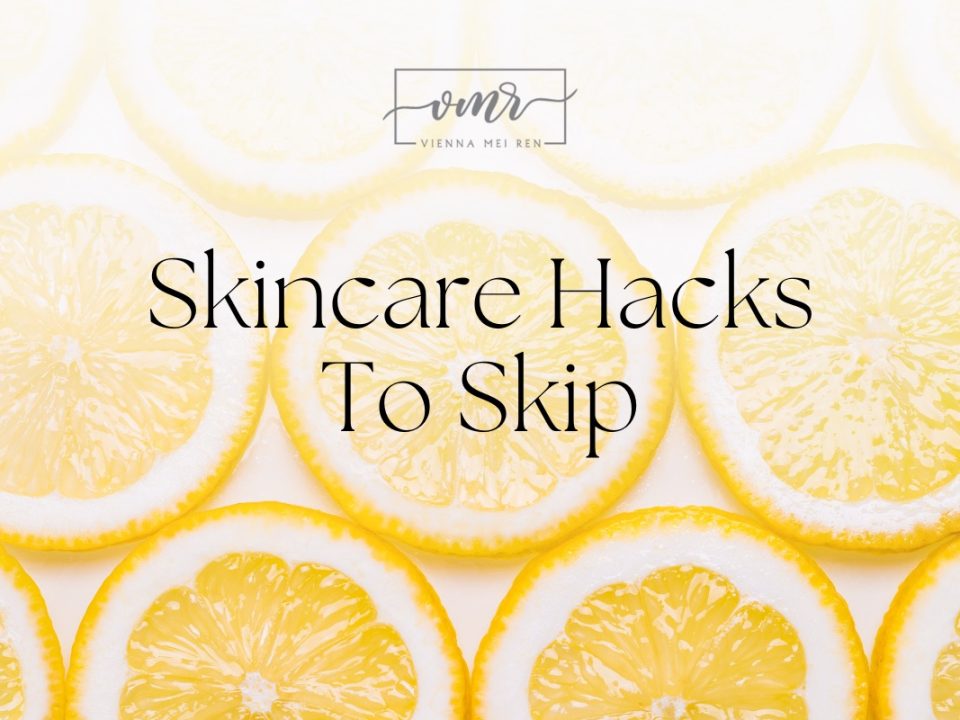
Put Your Best Feet Forward
July 29, 2025
Skincare Hacks to Skip: What NOT to Try on Your Face
September 22, 2025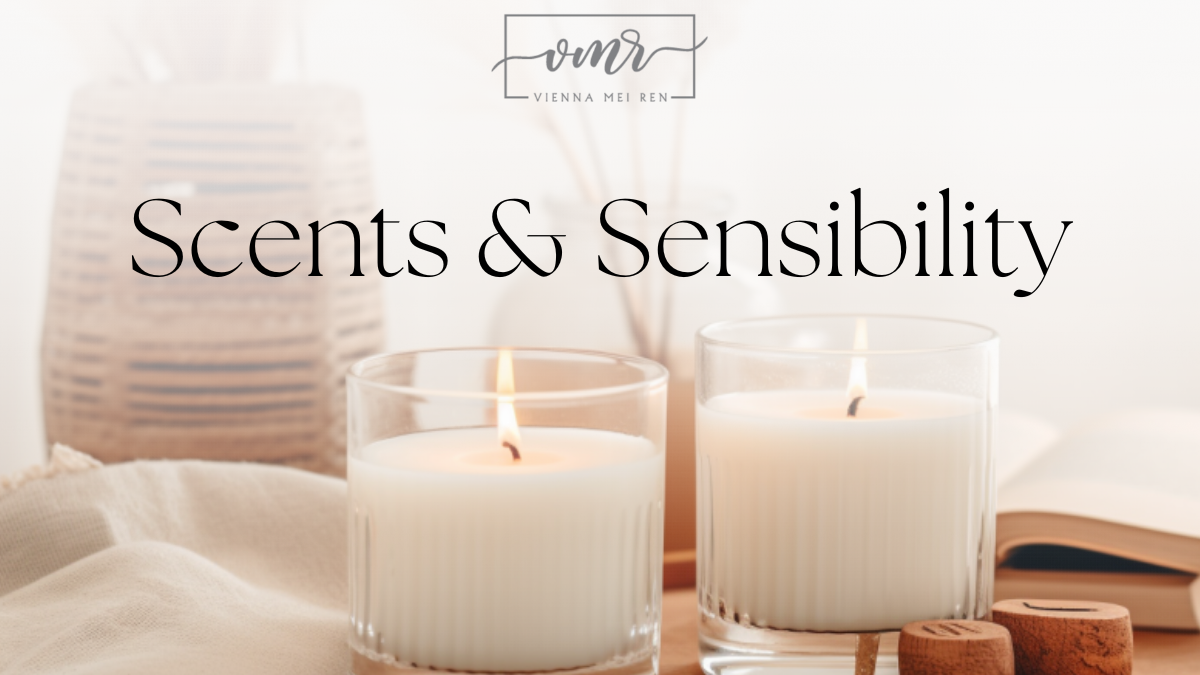
The Health Dangers of Candles and What to Use Instead
Candles. They’re one of our favourite self-care rituals, adding cozy ambience and spa-like scents to our homes.
Unfortunately, many candles are hiding some pretty nasty chemicals beneath those enticing scents. And lighting them could be filling your space with more than just a cloud of Sugar Cookie fragrance.
Burning candles can dull your glow, causing skin irritation, clogged pores, and cell-damaging oxidative stress. Beyond skin, scented candles have been linked to a number of serious health risks.
But before you click away in a huff of “everything I like is terrible for me” exasperation, we’ve got good news: not all candles are bad!
Read on to learn about the issues with many scented candles, what to avoid when candle shopping, what to look for, plus a few DIY alternatives for making your space smell amazing.
Candles 101: Hidden Risks and Healthier Alternatives
The Dark Side of Scented Candles
Lighting a candle is an experience, one that creates an atmosphere and fills your space with fragrance. Unfortunately, some candles can also release compounds that you’d definitely rather avoid, such as
- Particulate matter and soot – Linked to clogged pores, wrinkles, inflammation and a weakened skin barrier, as well as respiratory issues.
- Volatile Organic Compounds (VOCs) – Linked to eye, nose, and throat irritation, nausea, respiratory issues, and even nervous system and organ damage. Some candles release these even when they’re not lit!
- Polycyclic Aromatic Hydrocarbons (PAHs) – Some PAHs found in candles have been shown to have cancer-causing properties.
- Phthalates – Even at low levels this group of chemicals causes hormone disruption and reproductive issues.
Indoor air pollution with a side of smog facial? No thanks!
Your Candle Shopping Guide: Tips for Choosing Healthier Candles
What to Avoid
The “nope” list! Here are a few things to steer clear of when purchasing candles for your home.
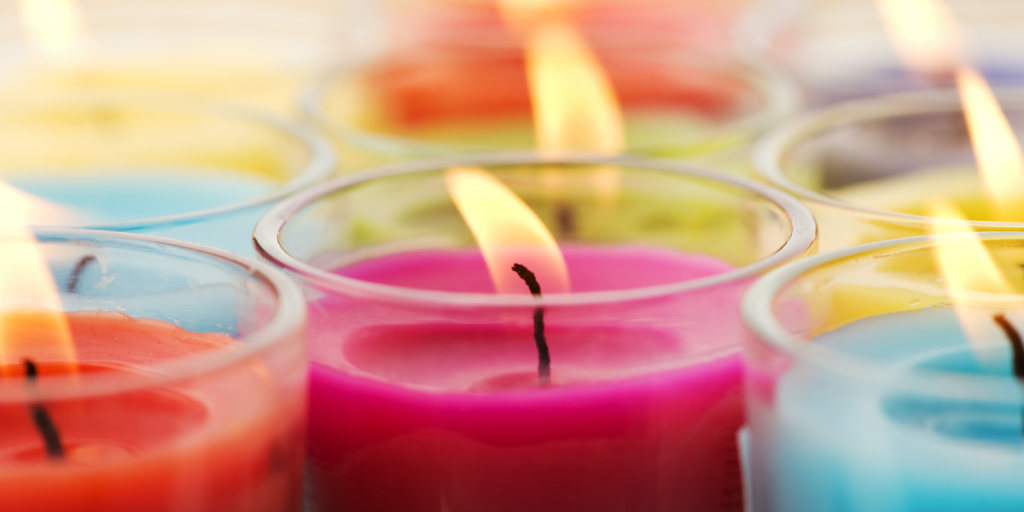
X Paraffin Wax
A byproduct of petroleum refining, paraffin wax releases toxic pollutants such as benzene (a known carcinogen) into the air when burned. As a fast-burning wax, paraffin also creates a lot of skin-wrecking soot and smoke.
X Synthetic Fragrances
Synthetic fragrances are more than just an irritant for those with asthma and allergies. When candles scented with synthetic fragrances are burned they release nasty chemicals like cancer-causing PAHs and hormone-disrupting phthalates.
X Wicked Wicks
Yes, even the wicks! Some wicks contain lead or heavy metals, which can be released into the air when burned. Cored wicks are when the wick material is wrapped around a core of another material, such as metal. These types of wicks produce dangerous soot that can cause respiratory problems.
What to Look For
Now for the “yays”! Here are a few things to look for when shopping for skin-safe, healthy candles:
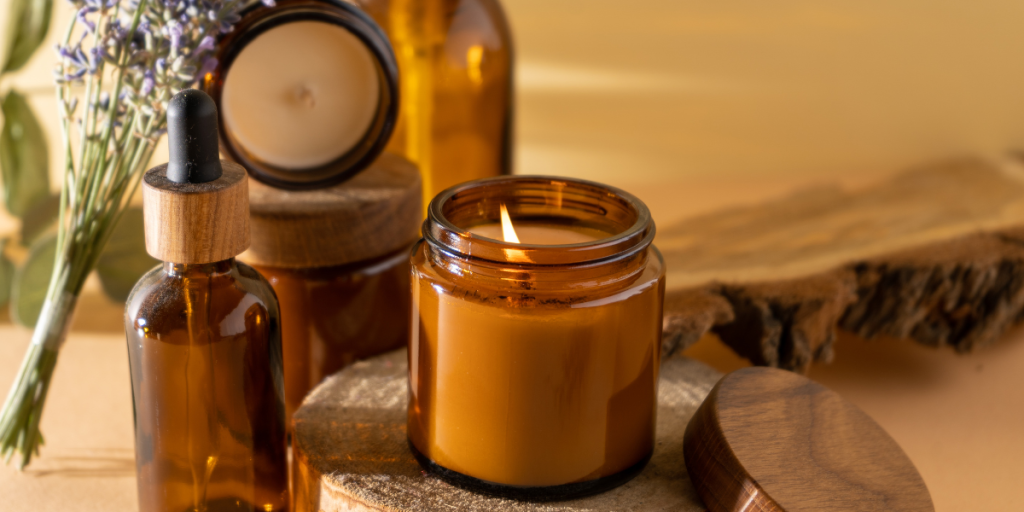
✓ Healthy Waxes
Perhaps the best wax to burn is 100% beeswax. Beeswax is clean-burning and non-toxic, emitting no harmful toxins or pollutants and virtually no soot. Beeswax candles have a long burn time, a natural golden colour, and a honey scent. Bonus: purchasing from local, sustainable beekeepers supports our pollinators!
Coconut wax and soy wax also deserve an honourable mention as clean-burning alternatives to paraffin.
✓ Natural Scents
Look for candles that are either unscented, or scented with real essential oils.
✓ Natural Wicks
Look for wicks made of 100% cotton or hemp (ideally unbleached) or untreated wood.
Healthy Home Fragrance Alternatives
Candles aren’t the only way to make your home smell amazing! If you’re looking for health ways to enhance the scent of your space, give one of these a try:
1. An Easy-Peasy DIY Room Spray
Want a space that smells luxurious without the chemicals? Making your own DIY room spray is a fun, customizable way to surround yourself with the scents you love without sacrificing your skin or your health.
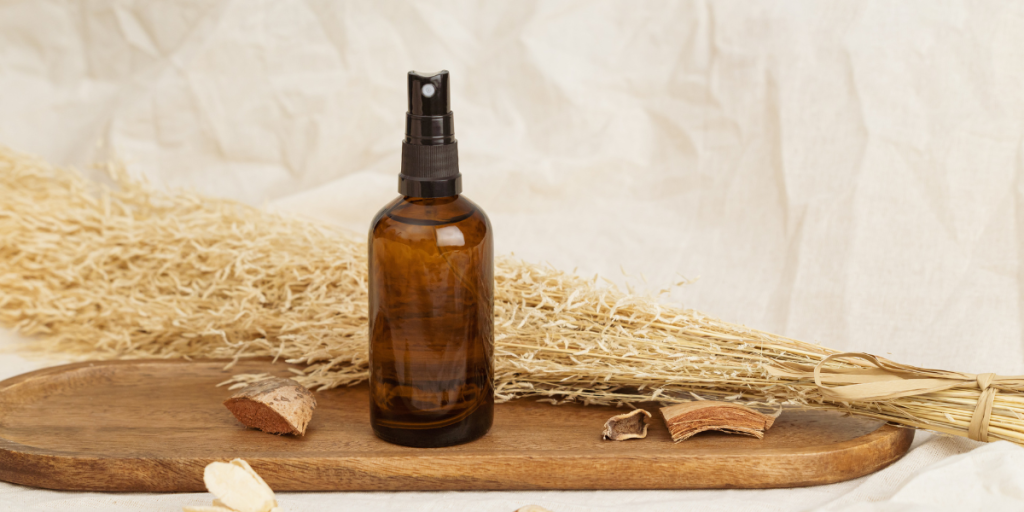
How To
Mix the following in a spray bottle:
- 1/2 cup water
- 1/2 cup vodka or witch hazel (to disperse the oils)
- 20 to 50 drops of your favourite essential oil(s)
Shake well and spritz for aromatherapeutic freshness!
The great thing about this recipe is that it’s completely customizable. You can use a single essential oil, or blend a few to create your very own signature home fragrance. Here are a few of our favourite combos:
Lavender + Vanilla + Chamomile – a sweet and floral calming blend
Bergamot + Cedarwood + Sweet Orange – a bright and woodsy blend
Peppermint + Rosemary + Eucalyptus – a fresh, energizing combo
2. A Cozy Simmer Pot
This is a wonderful way to fill your home with your favourite scents, and perfect for fall days ahead. It’s especially good for when company is coming! As an added bonus, the steam adds a little humidity to the air, which your skin will appreciate in the drier months.

How To
Fill a small pot with water, and toss in your favourite herbs, spices, etc. For example, you could add a few slices of citrus, a cinnamon stick, a couple cloves, and a few drops of vanilla extract.
Put the pot on a low heat simmer, and wait for your home to start smelling amazing!
3. A Sweet & Simple Scent Jar
Looking for an ultra-easy way to help your home smell fresh? We’ve got you!
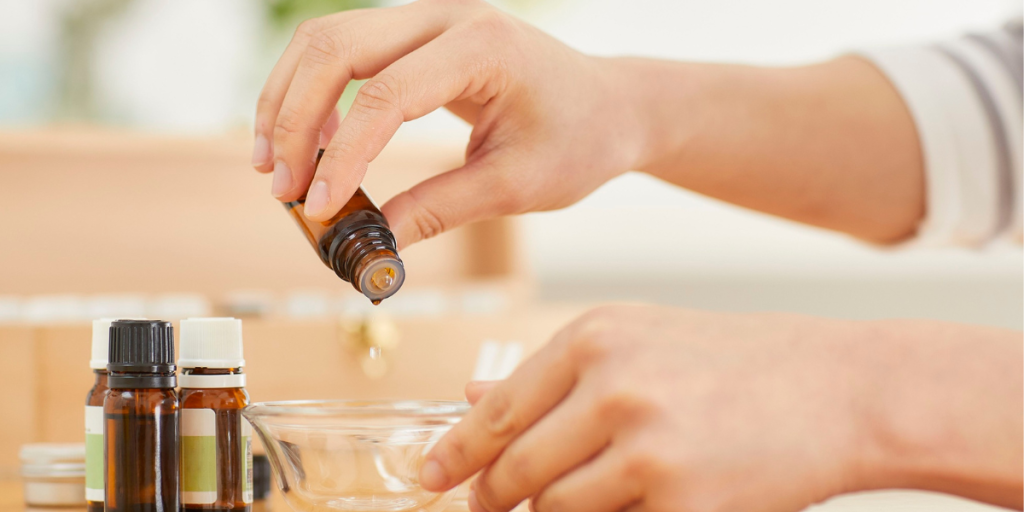
How To
- Get a glass jar (yes! Finally a use for the glass jar collection!) and fill it with baking soda. Choose your fave essential oil(s) and add about 10-15 drops.
- Grab a small piece of breathable fabric like cheesecloth, and cover the jar opening. Secure the fabric with an elastic or the jar ring.
That’s it!
Now simply place the jars wherever you could use some freshness. The baking soda absorbs odor, while the essential oil slowly releases scent into the air. Want more scent? You can refresh the jars by adding essential oil as desired.
Takeaway
If lighting a scented candle is your go-to ritual, it might be doing more harm than you think.
Burning candles can dull your glow, irritating skin and causing cell-damaging oxidative stress. Even worse, scented candles have been linked to some serious health risks.
Luckily, there are alternatives! From shopping smart and choosing healthier candles to DIY home fragrance options, there are plenty of ways to keep your space smelling fresh without the chemicals.
The takeaway? Scented candles can dull your glow, but with healthy options you’re good to go!
**********
Eileen Fauster of Essential Balance is a Registered Acupuncturist and Registered Holistic Nutritionist who specializes in skin care. Eileen helps clients by using the Vienna Mei Ren non-surgical acupuncture facelift, which combines the best acupuncture needles and techniques with a beautifying skin rejuvenation regime.
* Resources:
Ahn, J.-H., Kim, K.-H., Kim, Y.-H., & Kim, B.-W. (2015). Characterization of hazardous and odorous volatiles emitted from scented candles before lighting and when lit. Journal of Hazardous Materials, 286, 242–251. https://doi.org/10.1016/j.jhazmat.2014.12.040
Al Khathlan, N., Basuwaidan, M., Al Yami, S., Al-Saif, F., Al-Fareed, S., & Ansari, K. (2023). Extent of exposure to scented candles and prevalence of respiratory and non-respiratory symptoms amongst young university students. BMC Public Health, 23(1). https://doi.org/10.1186/s12889-023-15001-6
Benefits of beeswax. Honey Candles Canada. (n.d.). https://www.honeycandles.com/blogs/learn/benefits-of-beeswax
Ellis, C. (2024, October 19). The scary truth about candles: What you need to know about harmful ingredients. Malibu Apothecary. https://malibuapothecary.com/blogs/clean-candles/scary-truth-about-toxic-candles
Hlisníková, H., Petrovičová, I., Kolena, B., Šidlovská, M., & Sirotkin, A. (2020). Effects and mechanisms of phthalates’ action on reproductive processes and Reproductive Health: A Literature Review. International Journal of Environmental Research and Public Health, 17(18), 6811. https://doi.org/10.3390/ijerph17186811
Morosini, D. (2019, January 18). Dear Daniela: Is Burning Candles Bad For Your Skin?. Refinery29. https://www.refinery29.com/en-gb/burning-candles-bad-for-skin
Singh, A., Kumari, A., & Fatima, L. (2023). Beyond aromatherapy: Illuminating the underappreciated risks associated with Scented Candle Exposure. Environmental Science & Technology, 57(41), 15299–15300. https://doi.org/10.1021/acs.est.3c07574

